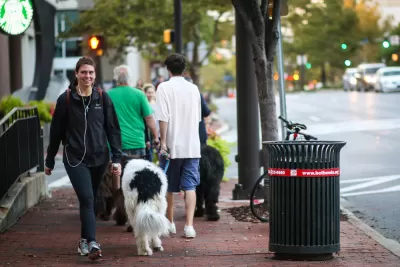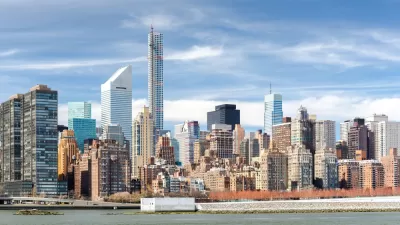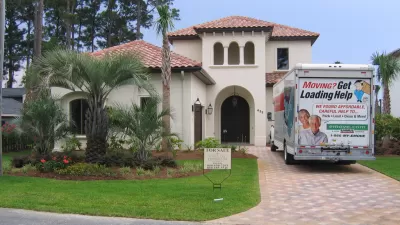Generation Z is leading a new push toward walkable communities, according to a recent survey by the National Association of Realtors.

American homebuyers have a strong preference for homes in walkable neighborhoods, according to the National Association of Realtors’ (NAR) recently published “2023 Community and Transportation Preferences Survey.”
“Seventy-nine percent of respondents rate walkability as “very” or “somewhat” important, and 78% say they’d pay more for a home in a walkable community, the survey shows,” according to an article by Realtor Magazine that shares details about the survey’s findings. “Young adults prioritize walkability the most, with 90% of Gen Z and millennial respondents indicating they’d pay more for a home in a walkable community; a third say they’d ‘pay a lot more.’”
The survey also debunks a common narrative that the pandemic revealed a preference for the automobile dependent neighborhoods of sprawl. “Walkability became more of a focus during the COVID-19 pandemic, but demand has only grown since,” according to the article. Still, despite those reported preferences, domestic migration trends show population declining in many of the country’s more urban areas, with more people arriving on the outskirts of metropolitan areas.
More details about the survey and its findings are available at the NAR website.

FULL STORY: Survey: Buyers May Pay More to Live in Walkable Communities

Americans May Be Stuck — But Why?
Americans are moving a lot less than they once did, and that is a problem. While Yoni Applebaum, in his highly-publicized article Stuck, gets the reasons badly wrong, it's still important to ask: why are we moving so much less than before?

Using Old Oil and Gas Wells for Green Energy Storage
Penn State researchers have found that repurposing abandoned oil and gas wells for geothermal-assisted compressed-air energy storage can boost efficiency, reduce environmental risks, and support clean energy and job transitions.

Placekeeping: Setting a New Precedent for City Planners
How a preservation-based approach to redevelopment and urban design can prevent displacement and honor legacy communities.

San Francisco’s Muni Ridership Grew in 2024
The system saw its highest ridership since before the Covid-19 pandemic, but faces a severe budget shortage in the coming year.

Colorado Lawmakers Move to Protect BRT Funding
In the face of potential federal funding cuts, CDOT leaders reasserted their commitment to planned bus rapid transit projects.

Safe Streets Funding in Jeopardy
The Trump administration is specifically targeting bike infrastructure and other road safety projects in its funding cuts.
Urban Design for Planners 1: Software Tools
This six-course series explores essential urban design concepts using open source software and equips planners with the tools they need to participate fully in the urban design process.
Planning for Universal Design
Learn the tools for implementing Universal Design in planning regulations.
Heyer Gruel & Associates PA
City of Moreno Valley
Institute for Housing and Urban Development Studies (IHS)
City of Grandview
Harvard GSD Executive Education
Salt Lake City
NYU Wagner Graduate School of Public Service
City of Cambridge, Maryland





























